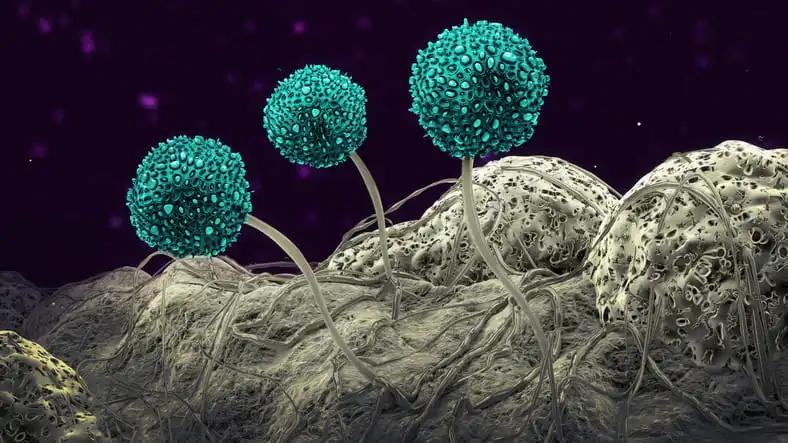KEY TAKEAWAYS
- The IELSG47/MALIBU phase 2 trial aimed to study the effect of the combination of rituximab and ibrutinib in untreated MZL, particularly on EMZL.
- A complete response (CR) was reported in 49% of the pts and a partial response in 42%.
- The study confirms the efficacy and safety of the combination of rituximab and ibrutinib in treating SMZL.
Recent studies demonstrated that the combination of rituximab and chlorambucil resulted in better progression-free and event-free survival (PFS, EFS) for extranodal MZL (EMZL) patients (pts) compared to either drug alone. There is no standard front-line therapy for MZL pts requiring systemic treatment. No randomized trials specifically address the initial therapy of splenic (SMZL) and nodal (NMZL) MZL subtypes. BTK inhibitors have shown promising results with a favorable benefit-risk profile for all MZL subtypes in the relapsed setting. The ongoing phase 2 trial, IELSG47/MALIBU investigated the efficacy and safety of rituximab plus ibrutinib in untreated MZL, focusing on EMZL. The study also reported a preliminary analysis of response and toxicity in the exploratory cohort of SMZL and NMZL pts.
The treatment comprised of 8 doses of rituximab, with the initial 4 doses administered weekly and the remaining 4 monthly. All doses, excluding the first, administered subcutaneously with ibrutinib (560 mg once daily) for 2 years. Response evaluations were conducted at 6, 24 weeks, 12, 18, and 24 months following the commencement of treatment using Matutes criteria in SMZL and Lugano Classification in NMZL.
From October 2019 to June 2021, 45 pts (30 with SMZL and 15 with NMZL) were registered across 16 centers in France, Italy, and Switzerland. The median age of the pts was 68 years (range of 44-81), 17 were male (38%), 41 had stage IV (91%), and 17 (38%) had elevated LDH. All pts with SMZL and 9 out of 15 (60%) with NMZL had bone marrow involvement. The best objective response at any time was a complete response (CR) in 22 pts (49%) and a partial response (PR) in 19 pts (42%). Of the 36 pts evaluated for response at 12 months, 18 (50%) had a CR, and 15 (42%) had a PR. However, 3 pts (8%) experienced disease progression. The optimal response time varied between 1-20 months, with a median of 2 months. Six of the seven pts who experienced relapse during the 23-month follow-up period had NMZL, and 1 had SMZL.
The response duration ranged from 1-28+ months to an average of 18. Three pts died from SARS-CoV2 infection, ischemic stroke, and car accidents. The 2-year overall survival (OS) rate was 92% (95% CI: 75–97), with no significant difference between SMZL and NMZL. In the NMZL subgroup, the median PFS was 24 months, and it was not reached among SMZL pts (p = 0.0133). The 2-year PFS was 77% in the whole cohort, 86% in SMZL, and 59% in NMZL, with a confidence interval of 59-88%, 62-95%, and 27-81%, respectively. Most pts handled the treatment well, with the most frequent grade 3–4 adverse events such as neutropenia in 20% of pts (n=9) and cutaneous rash in 9%(n=4)—few pts experienced Grade 3 atrial fibrillation 2%(n=1) or hypertension 4% (n=2). 33% of pts (n=15) had to stop the treatment after an average of 8 months (range: 2-23). The reasons ranged from progressive disease(3), toxicities(6), and unrelated events(4) (one-second primary tumor, one stroke, one car accident, one cold agglutinine disease) and two due to consent withdrawal.
The study’s findings demonstrate that the combination of rituximab and ibrutinib is an effective treatment option for SMZL with an acceptable toxicity profile.
Source: https://onlinelibrary.wiley.com/doi/10.1002/hon.3163_65
Clinical Trial: https://classic.clinicaltrials.gov/ct2/show/NCT03697512
Thieblemont, C., Lamy, T., Tani, M., Krzisch, D., Reda, G., Tedeschi, A., Usai, S. V., Guarini, A., Bijou, F., Stathis, A., Anastasia, A., Devizzi, L., Luminari, S., Arcaini, L., Casasnovas, O., Gressin, R., André, M., Houot, R., Bonomini, L., . . . Conconi, A. RITUXIMAB AND IBRUTINIB COMBINATION IS SAFE AND EFFECTIVE IN UNTREATED SPLENIC AND NODAL MARGINAL ZONE LYMPHOMAS: PLANNED SUBSET ANALYSIS OF THE IELSG47/MALIBU PHASE II STUDY. Hematological Oncology, 41, 104-106. https://doi.org/10.1002/hon.3163_65.



